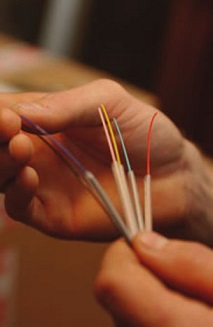NBN unrolls big hiring plan
 The architects of the NBN say they are on a hiring drive, looking to pick up 4,500 new workers in a $40 million recruitment program.
The architects of the NBN say they are on a hiring drive, looking to pick up 4,500 new workers in a $40 million recruitment program.
NBN says the program, which will include a training element, will boost its workforce to about 9,000 people.
The company is setting up a skills register to record worker accreditation and will also sign agreements with TAFEs and Registered Training Organisations in every major rollout region.
Specifically, NBN wants more copper cable jointers, linesworkers, cablers and telco technicians.
The company says a majority of the new jobs will go to New South Wales and ACT. Reports say that 1,300 positions are earmarked for deployment in NSW/ACT, 850 in Queensland, 850 in Western Australia, 800 in Victoria, 400 in South Australia/Northern Territory, and 200 in Tasmania.
The hiring program will focus on providing new jobs for late-stage career workers, NBN says, leading some media outlets to frame it as a ‘Dad’s army’ of new technicians.
The company says it is not a matter of charity, as it is genuinely seeking the expertise of skilled workers from other industries.
In addition, training programs will be tailored to attract school leavers and workers after concluded construction jobs.
Communications Minister Malcolm Turnbull has hailed the new program as a sign of major success in the long-running effort to roll out the National Broadband Network.
In other NBN news, reports in The Australian say the Australian Retailers Association and the Shopping Centre Council of Australia believe the rollout of the broadband network add weight to their argument that online purchases should be charged GST.
“The rollout of the NBN may precipitate an increase in the consumption of offshore intangibles, particularly those which require a reliable and fast internet connection,” a joint submission to Treasury, obtained by News Corp, reportedly says.
“The application of the GST needs to stay ahead of, for example, the next generation of 3D printing whereby a digital product could be purchased from offshore, but printed into a tangible form prior to use domestically,” it argues.








 Print
Print